
Vegetation Station
Building and sustaining a community of care through public transit and community gardens in Santa Monica, California.
Spring 2021
Collaborator: Nick Dalquest
The streets of Santa Monica, California mediate the urban density of Los Angeles and the vast ecological expanse of the Pacific Ocean beyond. Living in a city full of carefully dispersed greenery, ranging from sidewalks lined with pockets of succulents to a robust city-wide urban forest, residents of Santa Monica enjoy the health and happiness benefits of a city integrated with vegetation. However, the one thing lacking for many residents is a sense of autonomy over the plants in their environment. As housing prices skyrocket, few can afford to live in a dwelling with space for a garden. The Santa Monica Community Garden, located just blocks from the shore on a pedestrian-friendly stretch of Main Street, attempts to resolve this lack of personal garden space: the city program offers residents the opportunity to apply for a garden plot in the middle of the city, which they can tend to in collaboration with their neighbors.
In the realm of public transit, there is also oftentimes a lack of a certain sense of autonomy, ownership, and pride over the spaces which service the largely working class commuters who take advantage of the bus system. Bus stops are often littered with trash, poorly maintained, and outright architecturally hostile to the homeless community who uses them as temporary shelter. This project, Vegetation Station, aims to combine public gardens with public transit in an effort to inspire community pride and foster a culture of care among transit users and all city residents alike.
The bus stop featured in this proposal is a prototype for what could be a scalable system across the entirety of Santa Monica, even extending throughout the Los Angeles metropolitan area. This flagship bus stop, located next to the original Santa Monica Community Garden that inspired it, would seek to work with the existing care infrastructure created by Santa Monica community gardeners to develop a system of gardeners and caretakers to tend to Vegetation Stations across the city.
The homeless residents of Santa Monica could be recruited into this effort, becoming employed in paid labor to maintain and care for these vital public spaces.
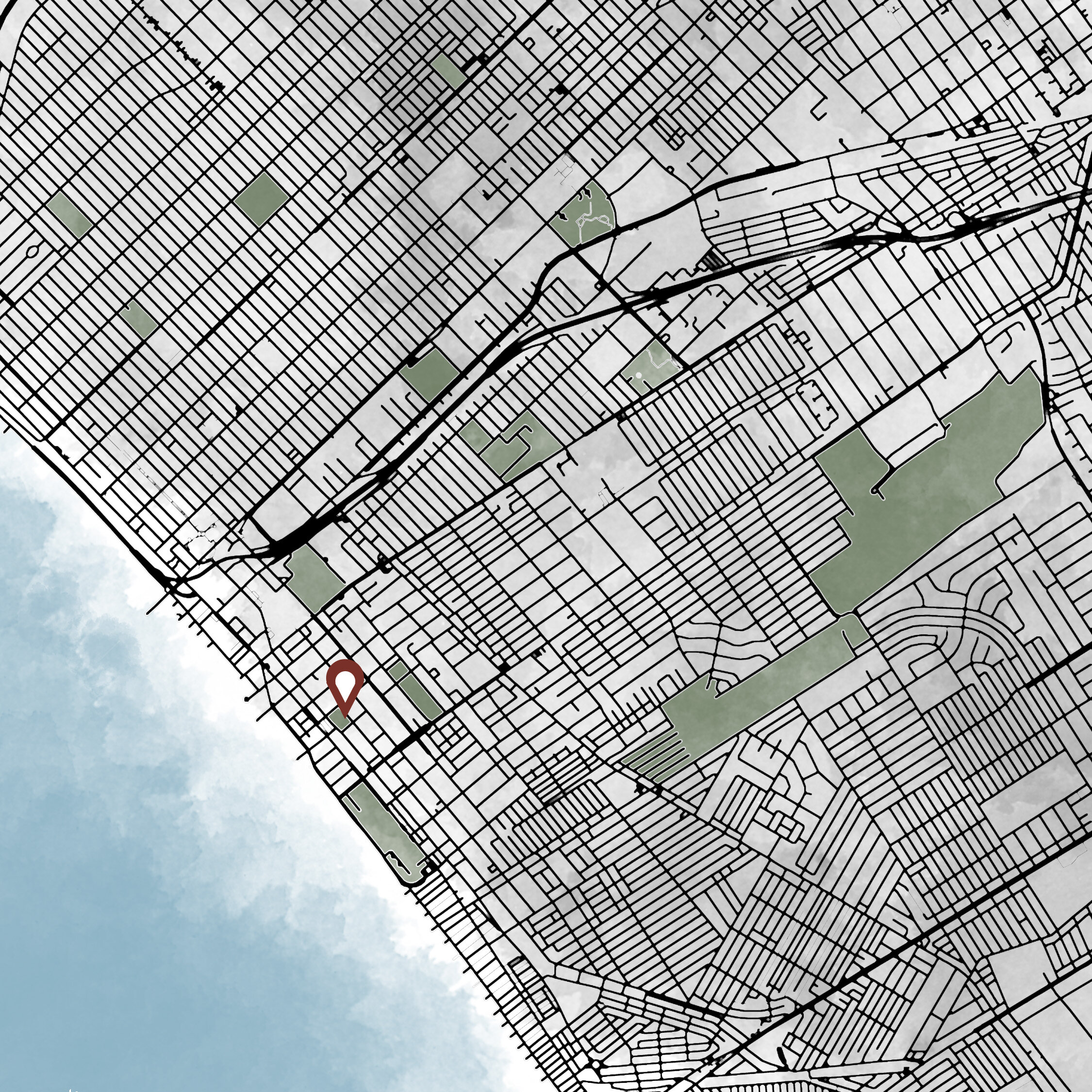

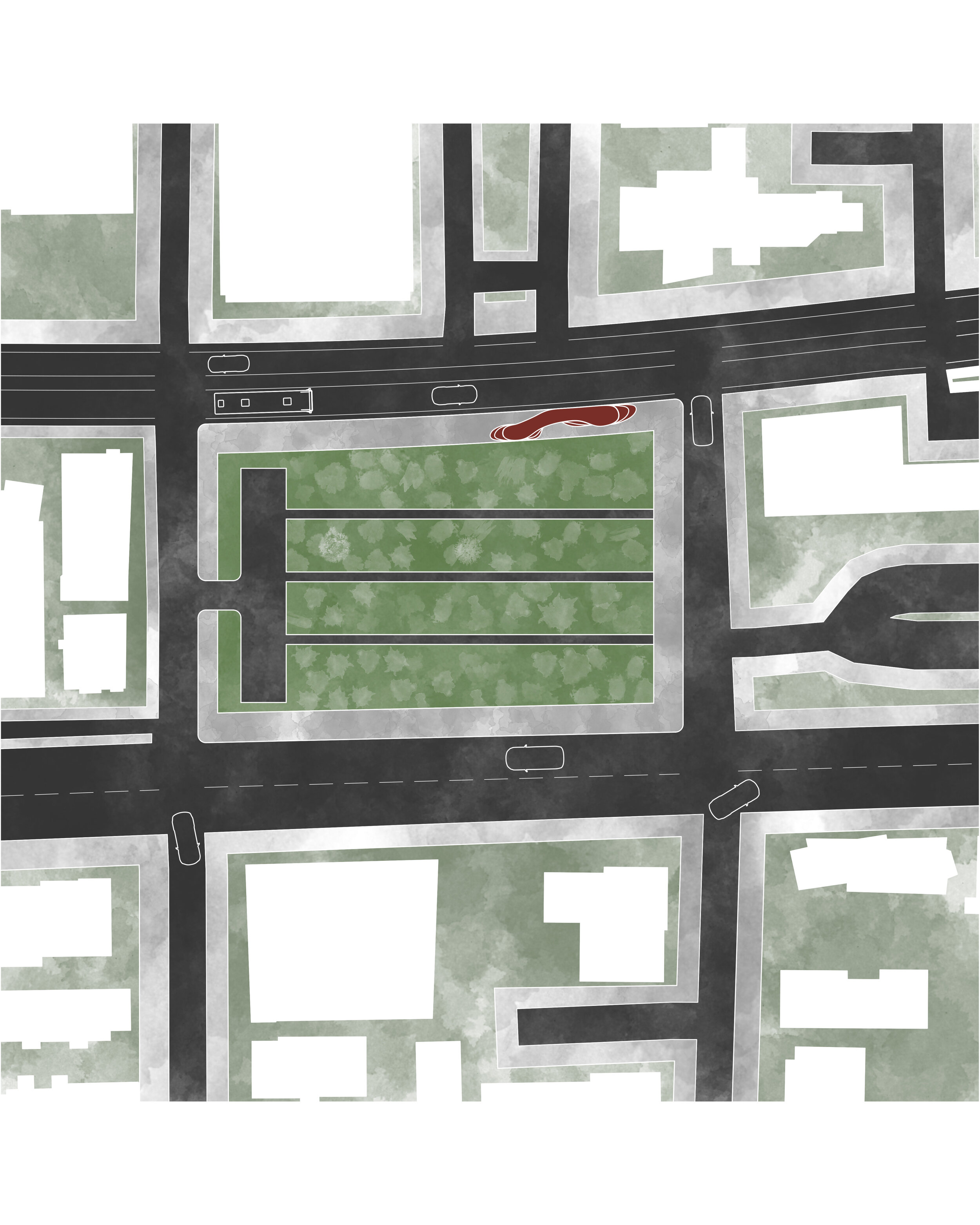
Encompassing the proposed 15-foot sidewalk in front of the Community Garden, this Vegetation Station consists of a 75-foot long undulating form of half-foot thick concrete walls lined with corten planters throughout the space. The terraced planters allow for a maximization of growing space in the relatively narrow domain of the sidewalk, as well as easy access for those tending to the plants contained within. The concrete and planters are periodically punctured by 10-foot spaces to allow ease of pedestrian access through and into the bus stop. In this way, the bus stop occupies the entirety of the sidewalk, not just shoved to one side, but also carefully incorporates the pedestrian realm into its mission of beautification and care. Pedestrians can easily move through the bus stop due to consistent 5 foot clearances at all times, accounting for accessibility for those using wheelchairs. Additionally, the boarding zone of the bus stop meets and exceeds the 5x8 foot ADA-required boarding zone for wheelchair users.
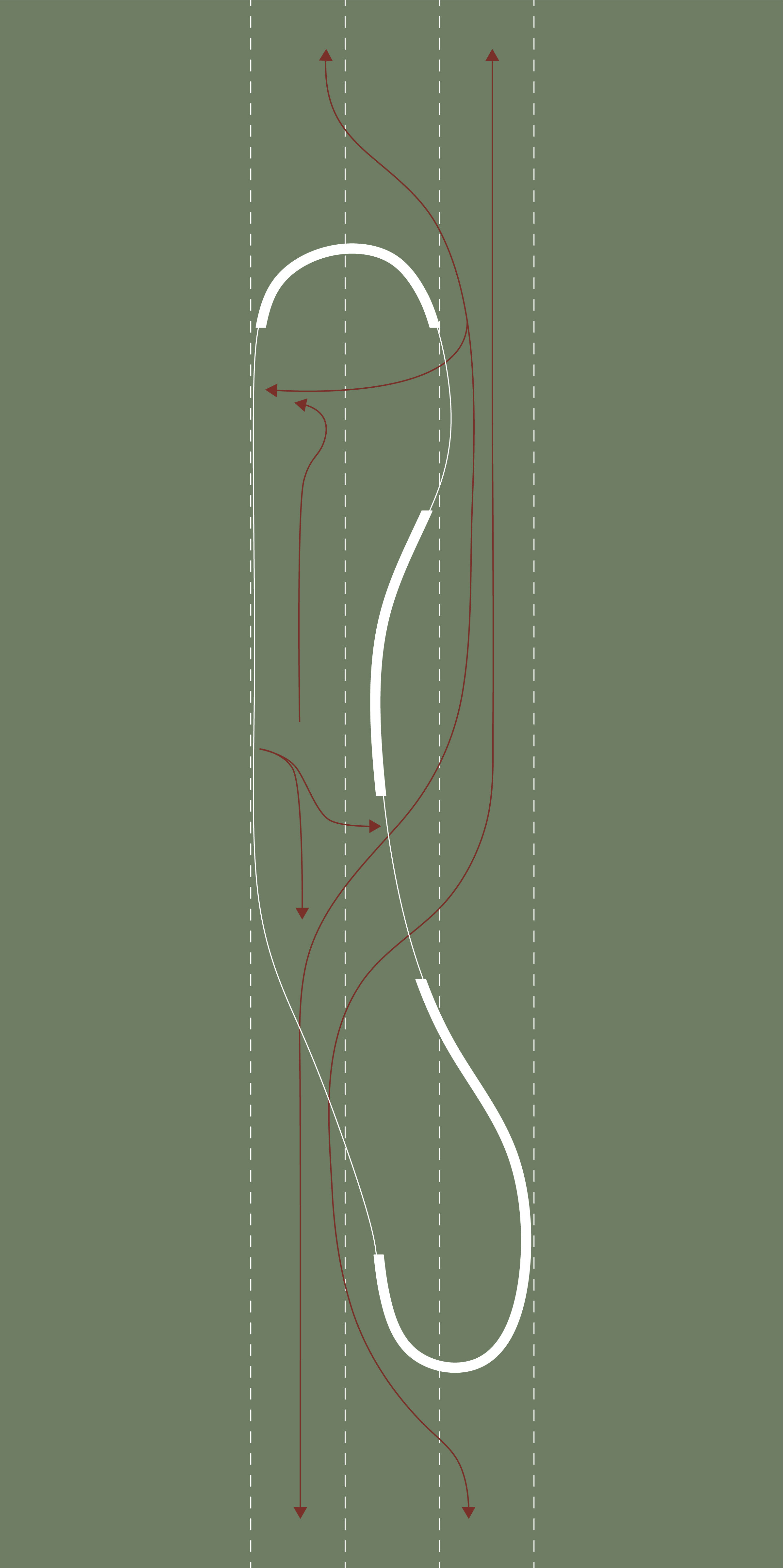
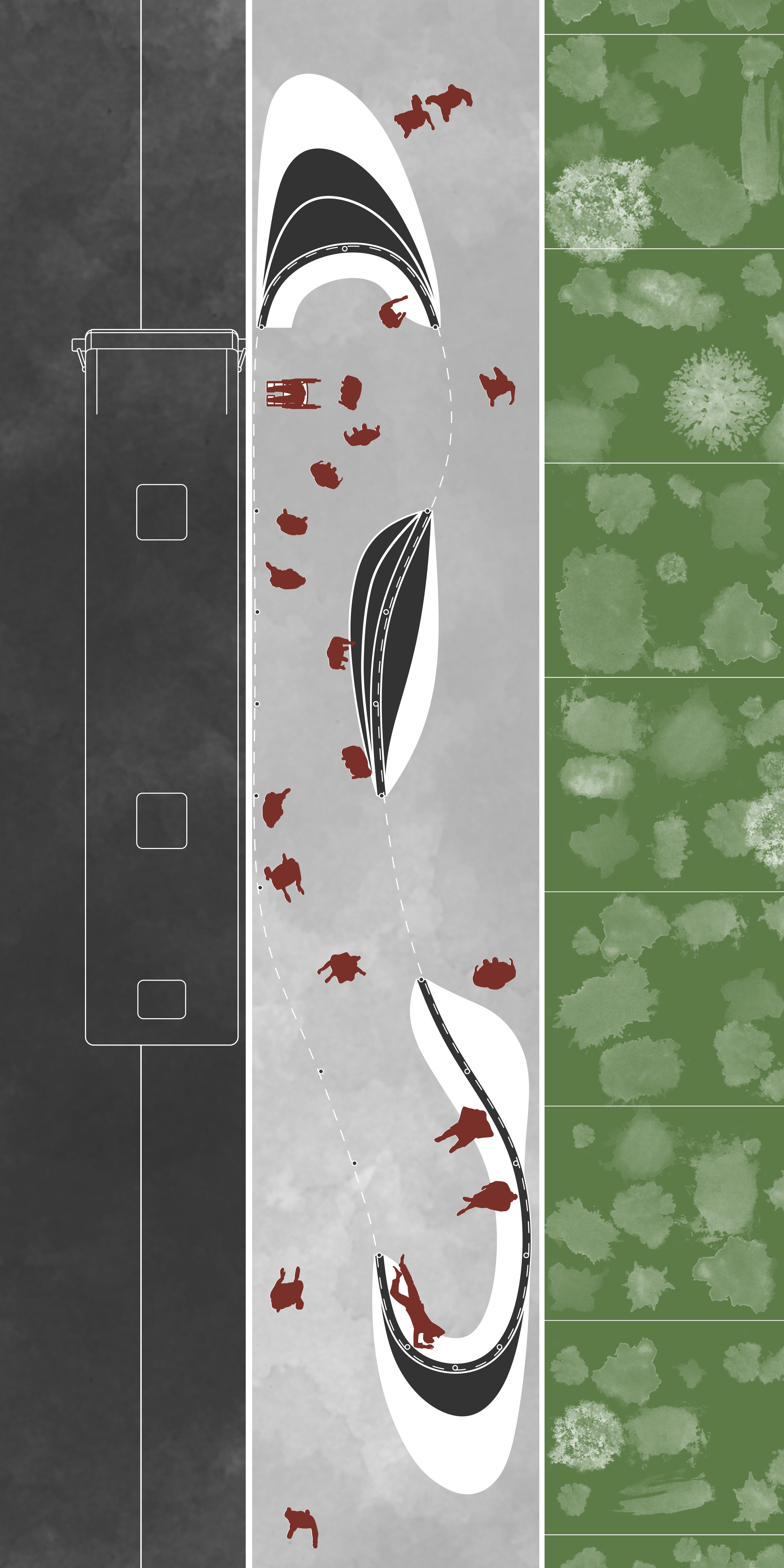
In continuing this mission of accessibility, the bus stop is carefully designed to be welcoming to unhoused Santa Monica residents in need of temporary shelter. The partially enclosed seating area offers ample, uninterrupted bench space, rejecting the vernacular of hostile city design which divides public seating into single-user portions in order to discourage the homeless from resting there. Additionally, the seating area of the bus stop is wide and welcoming enough to encourage both waiting for a bus or stopping to chat and have a takeout meal with friends. In this way, the Vegetation Station is intended to be not just a piece of transportation infrastructure, but also a piece of the public realm of the city; it is also usable as a sort of micro-park. By enfolding the bus stop into the realm of the public park, it becomes seen as a public resource and asset to the community, something to take pride in for all residents. In this way, the community garden aspect of the bus stop inherently discourages vandalism and encourages care and upkeep by fostering a sense of ownership and agency among all Santa Monica residents.
Near the boarding zone of the bus stop, another partially enclosed niche offers a multi-use waste bin offering disposal for trash, recyclables, and compostable materials, the latter of which can be processed in the neighboring Community Garden and reused as fertilizer for the Vegetation Station. Additionally, a dual-use counter space can be used to set shopping bags or other items while waiting for the bus, or can be used as a slightly higher bench for those waiting in the shorter-term. Those who prefer to stand can line up alongside the columns lining the curb, waiting to board the bus while still maintaining enough room for the procession of pedestrians.
The sloping, undulating form of the roof, composed of a curving metal formwork inlaid with a metal mesh for the growth of ivy, provides seasonally appropriate amounts of sunlight and shade for plants and humans alike in correspondence with changes in the ivy’s density. The delicate form emphasizes harmony with the pedestrian domain of the sidewalk, unobtrusively rising from the ground, swelling to provide space to stand, and lowering again for the realm of the concrete bench on the northmost side. This integration of form and human usage in elevation, and, in the case of the pedestrian flow, in plan, allows the Vegetation Station to seamlessly rise into the public sphere.

West Elevation
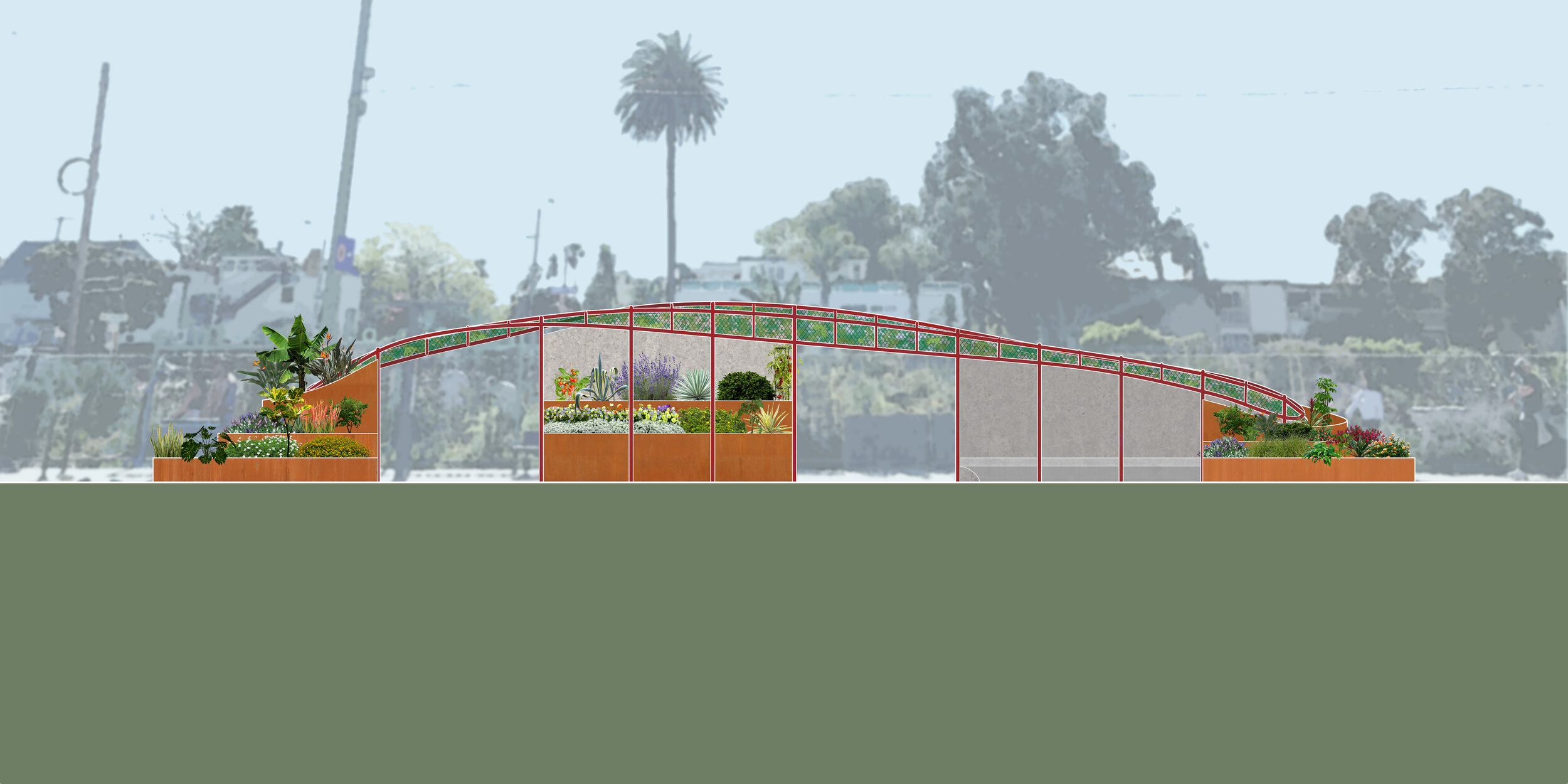
East Elevation

North Elevation
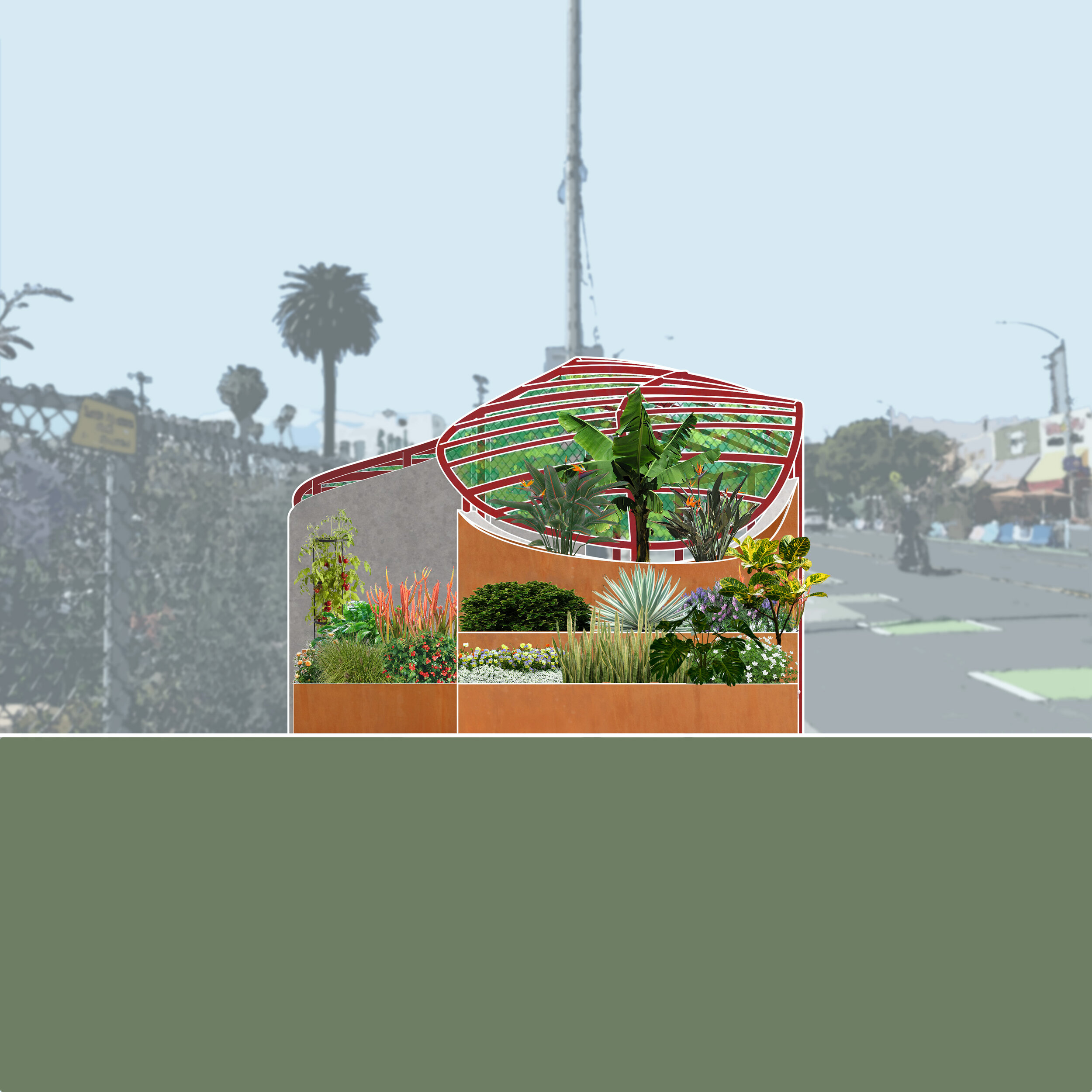
South Elevation

![Axon [Converted]-01.jpg](https://images.squarespace-cdn.com/content/v1/5ecf291e1b3e446f724fd3c4/1617311265237-WP1HX55B6QKZSCTE9Z4E/Axon+%5BConverted%5D-01.jpg)


